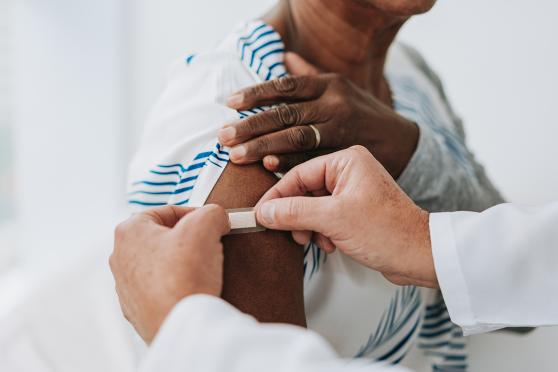How to get help when you’re feeling down
It’s normal to have periods of stress, anxiety, or sadness in life. But when negative feelings won’t go away, you don’t have to just grin and bear it. Lean on these resources to feel more like yourself again.

It’s easy to think that depression and prolonged feelings of sadness or anxiety are a normal part of getting older. But according to the National Institute on Aging, they’re not. Since prolonged depression and isolation may contribute to the development of physical health problems, it’s important to seek help if you’re struggling with your emotions. Don’t just wait them out or push through as if they are not there. It is important for your health that you take care of this.
Simply asking for help through a phone call, in person, or via a virtual chat with a professional can be useful when you’re feeling down. Rely on these resources if you’re going through a difficult time.
Resource #1: A trusted friend
If there is someone in your life whom you trust, it may be helpful to talk to them about how you are feeling. The conversation can give you a chance to share what is going on in your life and how they might be able to help you.
Resource #2: Your community
Volunteering can help boost your mood. According to a study in the American Journal of Preventive Medicine, just two hours of volunteer work per week may ease loneliness and symptoms of depression.
Unsure where to start? VolunteerMatch.org can connect you with organizations that need help. Just create an account and the site will offer a list of organizations to choose from based on your abilities. Currently, VolunteerMatch also allows for virtual serving opportunities.
The YMCA also offers opportunities to give back and support the community. Based on your interests, you can help teach a class, support a current program, or motivate youth to build character strengths and skills.
Resource #3: A professional
Many times, your feelings are trying to tell you something, says Carla DeFraine, Ph.D., a psychologist in Irvine, California. There may be underlying reasons why you feel sad, and there may be things in your life that need to change.
The best place to start is with your primary care provider (PCP). Your PCP can help you figure out what’s really going on and direct you to the best resources for your needs.
They may refer you to a mental health professional, such as a psychologist, psychiatrist, or therapist. This professional can help you explore the emotions you are having and give you the tools to cope with whatever life is throwing your way.
Resource #4: A professional help hotline
There are times where you need to speak to someone right away. And that’s where hotlines play a role. No matter what you are experiencing, there is someone at the other end who will listen.
If you are having an emotional crisis, or thinking about suicide, or you suspect a loved one might be going through either situation, call the National Suicide Prevention Lifeline at 988. It’s open 24/7, so don’t hesitate to reach out, day or night.
Here are more resources to help with other problems you or a loved one may be facing. Each is confidential and available 24/7.
- Substance Abuse and Mental Health Services Administration: A free service available to individuals with substance abuse and/or mental disorders who seek counseling. Call 1-800-662-HELP (4357) or visit their webpage.
- Veterans Crisis Line: Veterans experiencing a crisis or who are concerned about a loved one can call or go online to chat with a professional. Call 1-800-273-8255 and press 1.
- National Sexual Assault Hotline: If you, or someone you care for, is the victim of sexual violence or assault, you can call or chat online with a trained staff member in your area. Call 1-800-656-HOPE (4673).
- The National Domestic Violence Hotline: Speak confidentially with a trained expert if you or someone you know is experiencing domestic violence. Call 1-800-799-SAFE (7233) or chat online.
For any questions about mental health coverage, benefits, or providers, please call the Mental Health/Substance Abuse phone number on the back of your member ID card.


